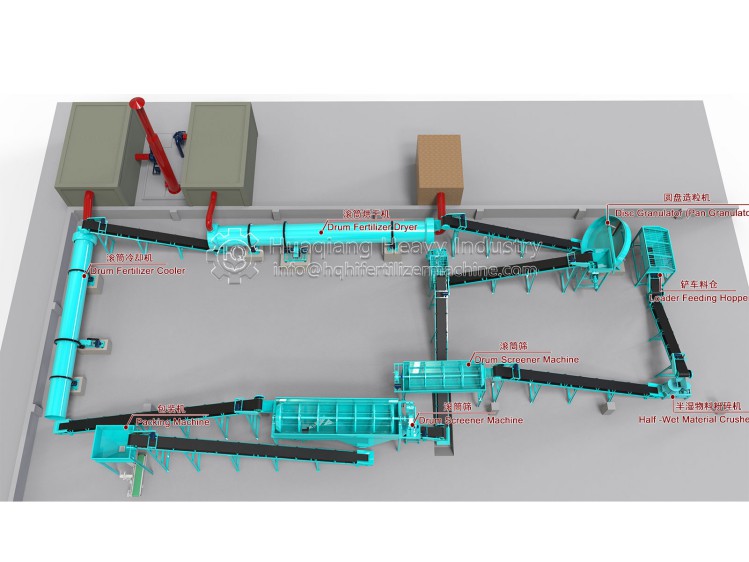Make rational use of organic fertilizer production line and do a good job in the resource utilization of breeding waste
2025/07/05
With the development of economy, living standards, and the increasing demand for livestock and poultry products, China's animal husbandry has developed rapidly, and is moving towards the direction of large-scale and intensive. However, the corresponding emissions of livestock and poultry feces are large, and feces cannot be comprehensively utilized as resources, resulting in increasingly prominent pollution problems to the atmosphere, water and soil. According to reports, animal husbandry is a big polluting industry after steel and coal, and 45% of agricultural non-point pollution sources come from livestock manure. Therefore, it is a major livelihood project to do a good job in the resource utilization of livestock and poultry breeding waste, which is related to the effective supply of livestock products and the change of production and living environment.

The decomposition of organic fertilizer production line mainly occurs on the surface of material particles or near the surface of particles. The larger the specific surface area of materials, that is, the finer the material particles, the faster the degradation rate of organic matter, but the prerequisite is that there is sufficient oxygen supply. Usually, when the particle size of the material reaches a certain limit, it is inversely proportional to the porosity.
Different methods of organic fertilizer fermentation or oxygen supply have different requirements on the particle size of materials. The upper limit of strip stacking or static composting is taken, while the lower limit of aeration or forced ventilation system is taken. The commonly used particle size adjustment methods include crushing and mixing methods. The crushing method is to crush large materials to the appropriate particle size with crushing equipment, and the mixing method is to mix high moisture and too fine materials with dry materials of the appropriate particle size and adjust them to the appropriate strength. In actual production, the two methods are generally used at the same time.
